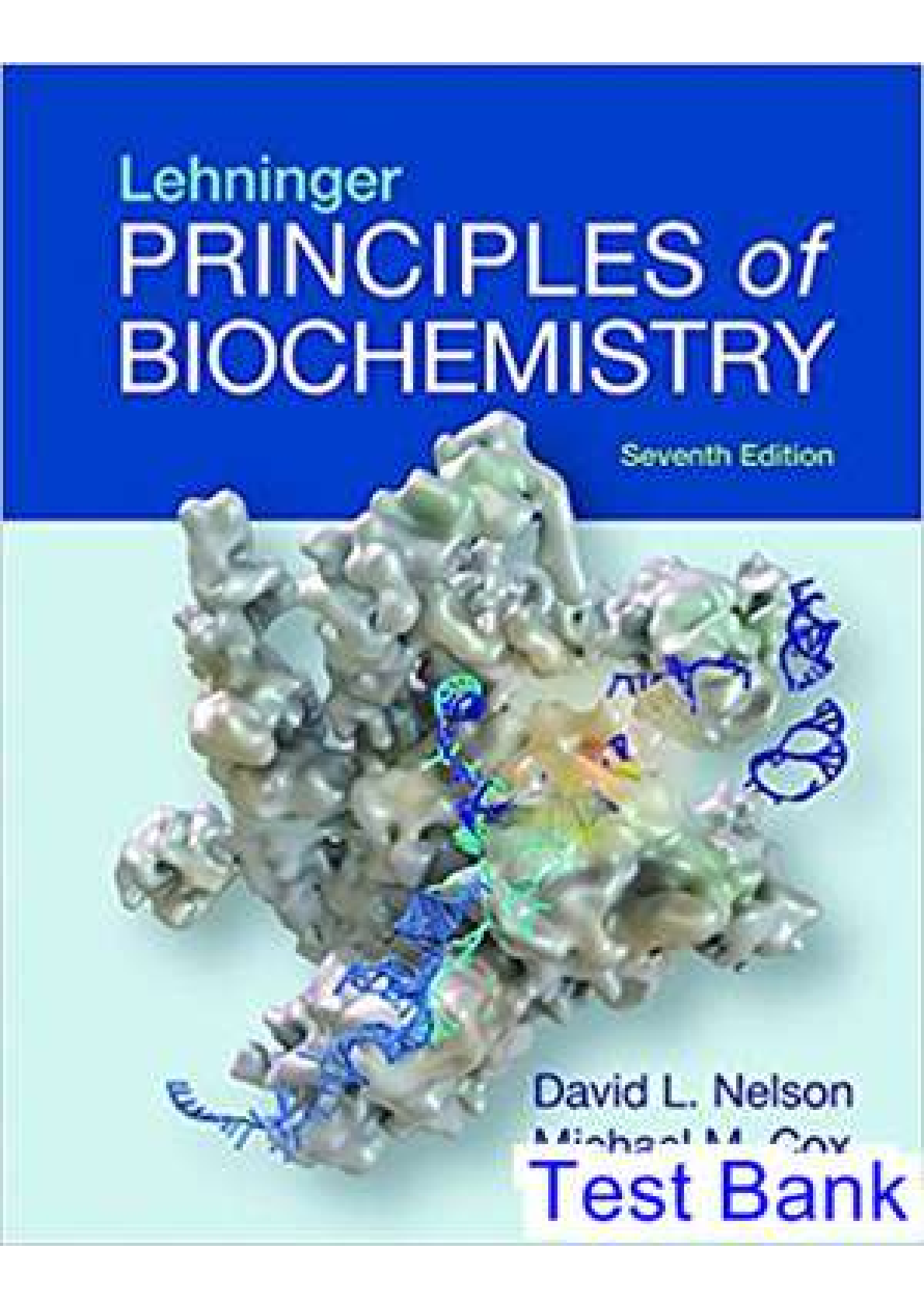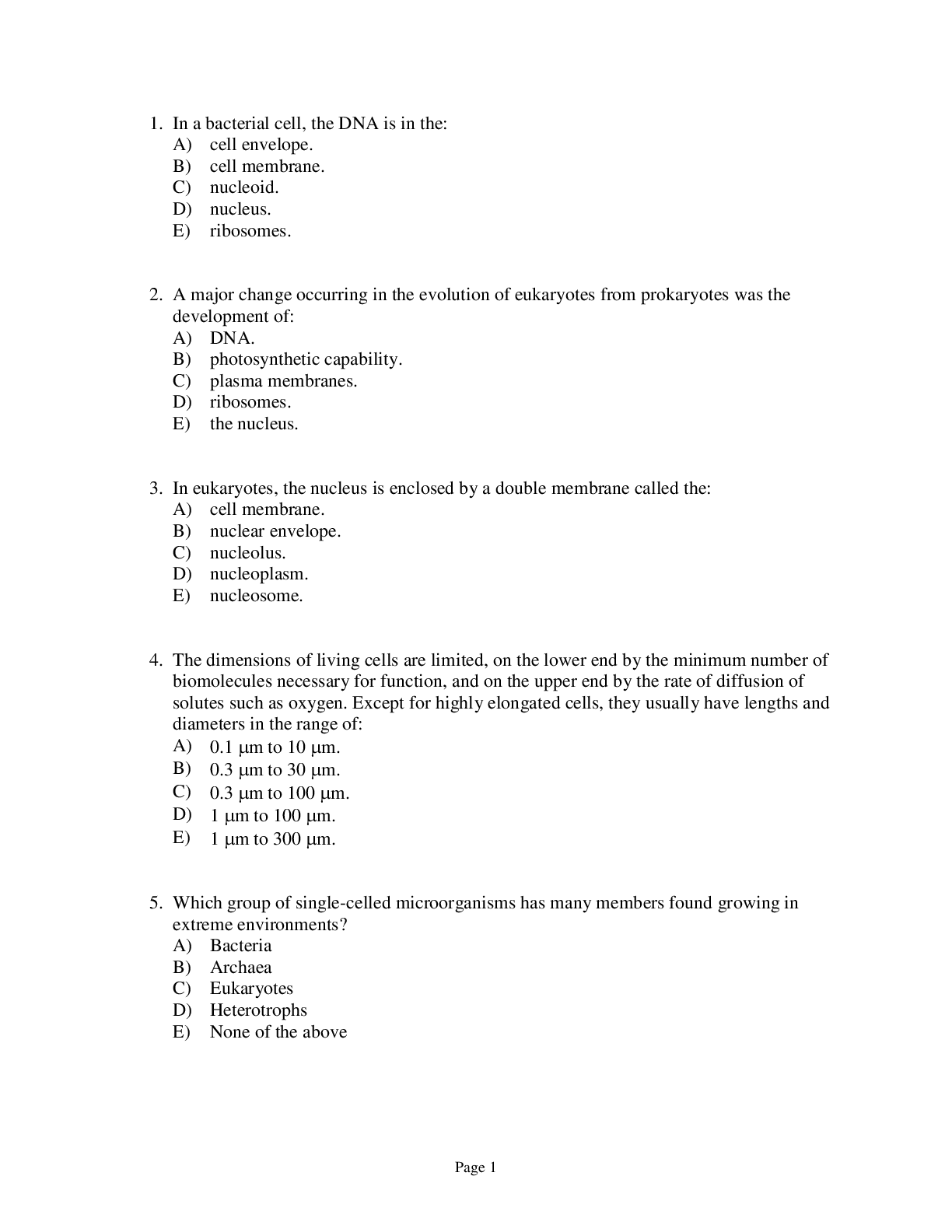BioChemistry > TEST BANKS > Lehninger Principles of Biochemistry 7th Edition Nelson Test Bank UPDATED 2021 (All)
Lehninger Principles of Biochemistry 7th Edition Nelson Test Bank UPDATED 2021
Document Content and Description Below
Lehninger Principles of Biochemistry 7th Edition Nelson Test Bank UPDATED 20211. In a bacterial cell, the DNA is in the: A) cell envelope. B) cell membrane. C) nucleoid. D) nucleus. E) ribosomes.... 2. A major change occurring in the evolution of eukaryotes from prokaryotes was the development of: A) DNA. B) photosynthetic capability. C) plasma membranes. D) ribosomes. E) the nucleus. 3. In eukaryotes, the nucleus is enclosed by a double membrane called the: A) cell membrane. B) nuclear envelope. C) nucleolus. D) nucleoplasm. E) nucleosome. 4. The dimensions of living cells are limited, on the lower end by the minimum number of biomolecules necessary for function, and on the upper end by the rate of diffusion of solutes such as oxygen. Except for highly elongated cells, they usually have lengths and diameters in the range of: A) 0.1 m to 10 m. B) 0.3 m to 30 m. C) 0.3 m to 100 m. D) 1 m to 100 m. E) 1 m to 300 m. 5. Which group of single-celled microorganisms has many members found growing in extreme environments? A) bacteria B) archaea C) eukaryotes D) heterotrophs E) None of the answers is correct.Page 2 6. The bacterium E. coli requires simple organic molecules for growth and energy—it is therefore a: A) chemoautotroph. B) chemoheterotroph. C) lithotroph. D) photoautotroph. E) photoheterotroph. 7. Which is a list of organelles? A) mitochondria, chromatin, endoplasmic reticulum B) peroxisomes, lysosomes, plasma membrane C) proteasomes, peroxisomes, lysosomes D) mitochondria, endoplasmic reticulum, peroxisomes E) All of the answers are correct. 8. Which list has the cellular components arranged in order of INCREASING size? A) amino acid < protein < mitochondrion < ribosome B) amino acid < protein < ribosome < mitochondrion C) amino acid < ribosome < protein < mitochondrion D) protein < amino acid < mitochondrion < ribosome E) protein < ribosome < mitochondrion < amino acid 9. The three-dimensional structure of macromolecules is formed and maintained primarily through noncovalent interactions. Which one of the following is NOT considered a noncovalent interaction? A) carbon-carbon bonds B) hydrogen bonds C) hydrophobic interactions D) ionic interactions E) van der Waals interactions 10. Which element is NOT among the four most abundant in living organisms? A) carbon B) hydrogen C) nitrogen D) oxygen E) phosphorusPage 3 11. The four covalent bonds in methane (CH4) are arranged around carbon to give which geometry? A) linear B) tetrahedral C) trigonal bipyramidal D) trigonal planar E) trigonal pyramidal 12. What functional groups are present on this molecule? A) ether and aldehyde B) hydroxyl and aldehyde C) hydroxyl and carboxylic acid D) hydroxyl and ester E) hydroxyl and ketone 13. The macromolecules that serve in the storage and transmission of genetic information are: A) carbohydrates. B) lipids. C) membranes. D) nucleic acids. E) proteins. 14. Stereoisomers that are nonsuperimposable mirror images of each other are known as: A) anomers. B) cis-trans isomers. C) diastereoisomers. D) enantiomers. E) geometric isomers. 15. The catalog of all proteins functioning in a cell is the: A) metabolome. B) proteasome. C) lysosome. D) proteome. E) genome.Page 4 16. Use the terms a) chemoautotrophs, b) chemoheterotrophs, c) photoauto [Show More]
Last updated: 2 years ago
Preview 1 out of 648 pages
.png)
Buy this document to get the full access instantly
Instant Download Access after purchase
Buy NowInstant download
We Accept:

Reviews( 0 )
$28.00
Can't find what you want? Try our AI powered Search
Document information
Connected school, study & course
About the document
Uploaded On
Jun 18, 2022
Number of pages
648
Written in
Additional information
This document has been written for:
Uploaded
Jun 18, 2022
Downloads
0
Views
145

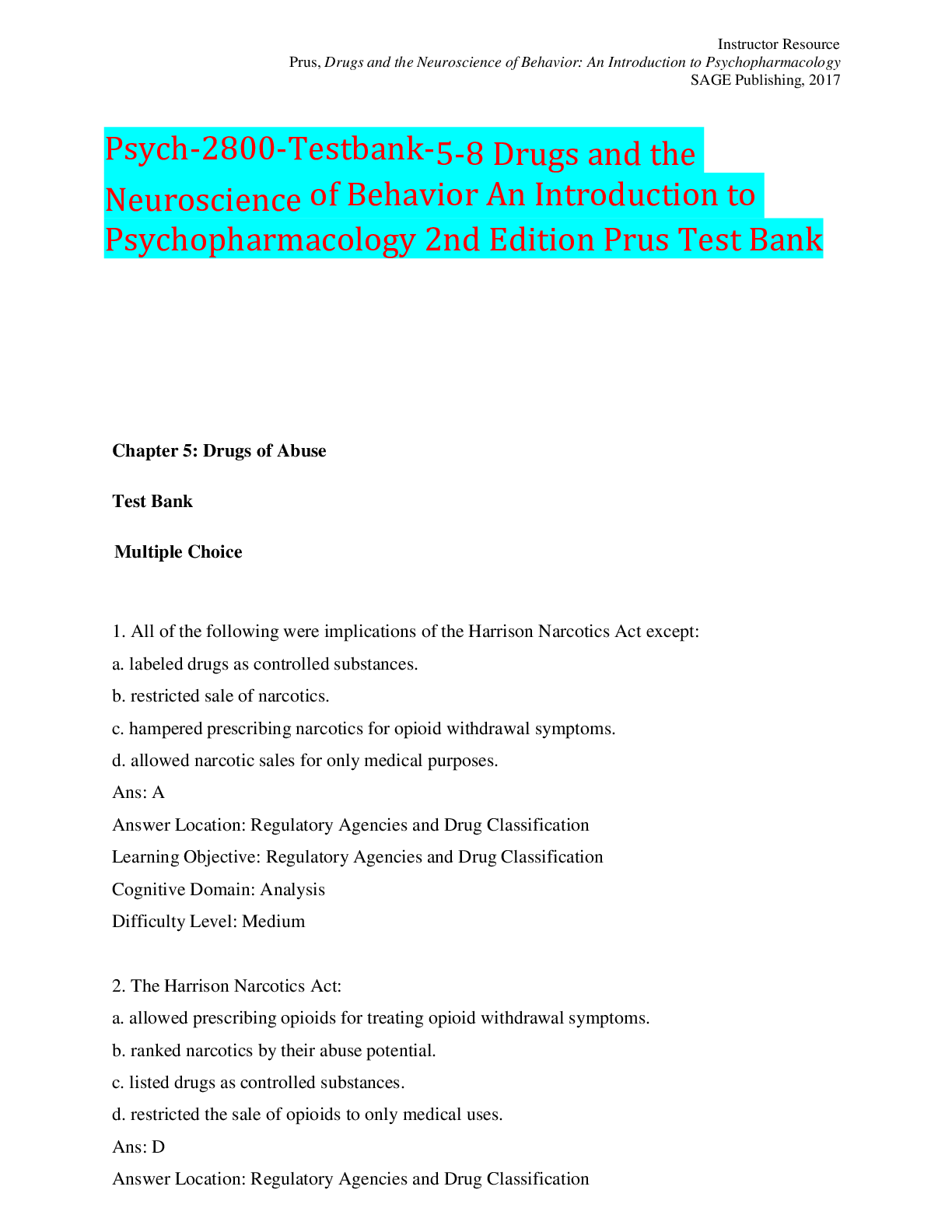

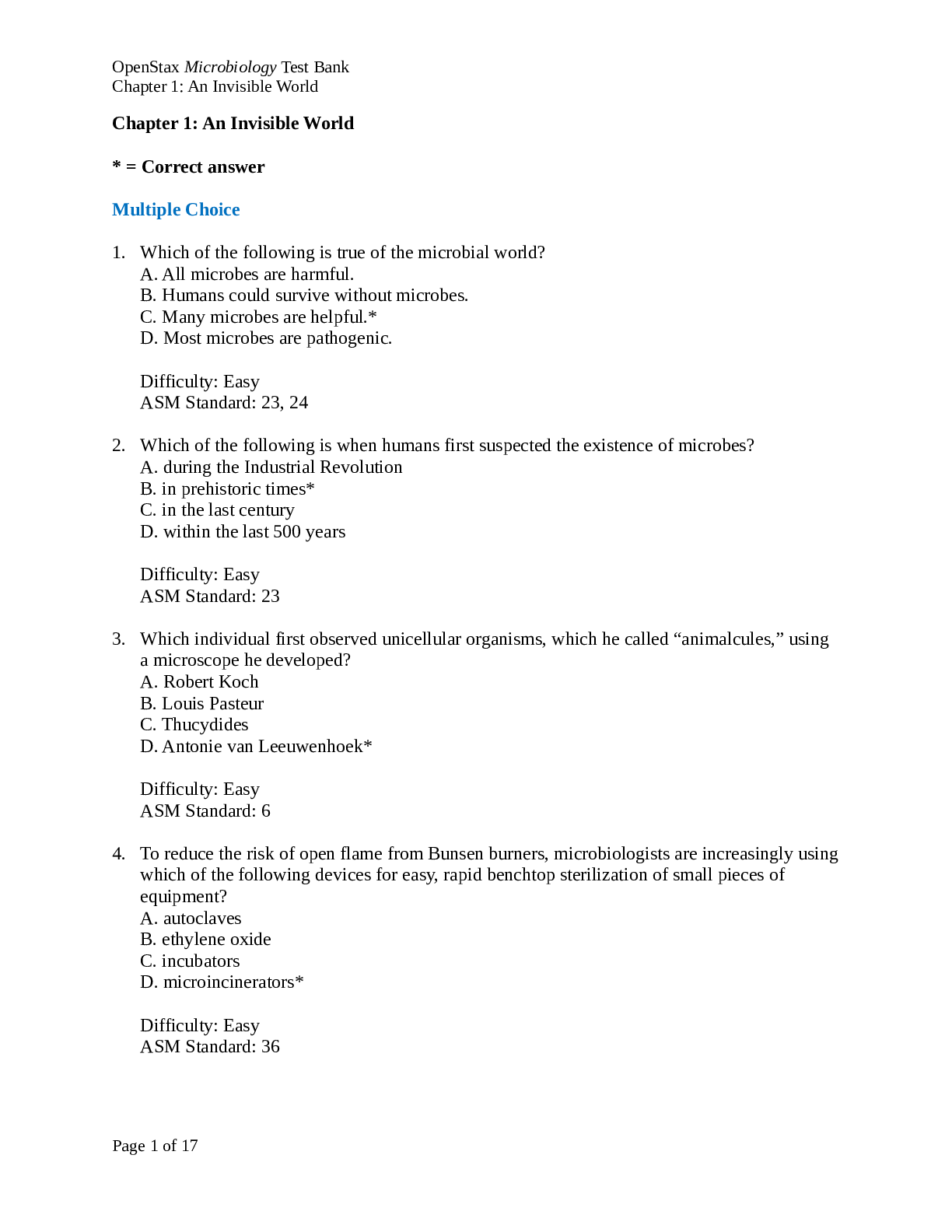
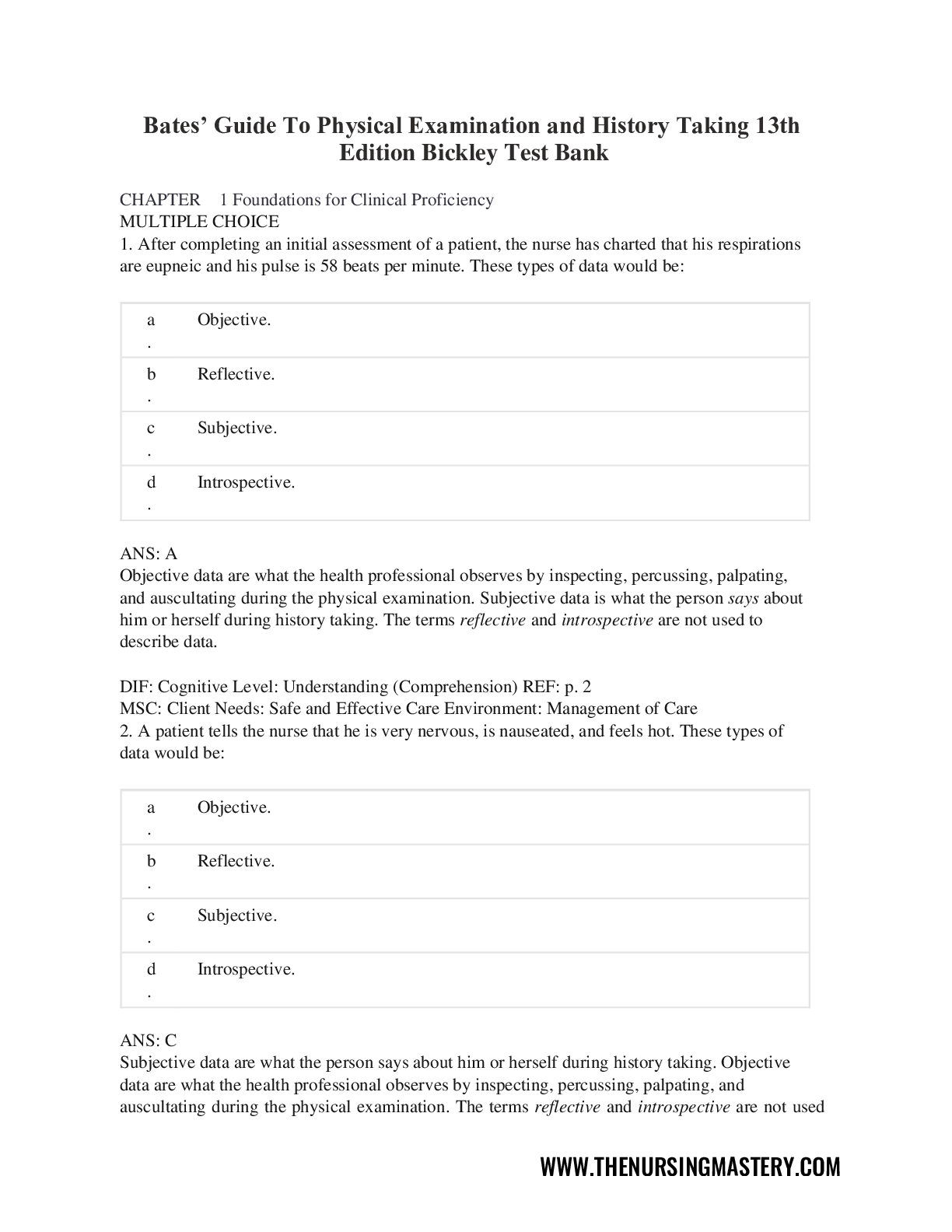



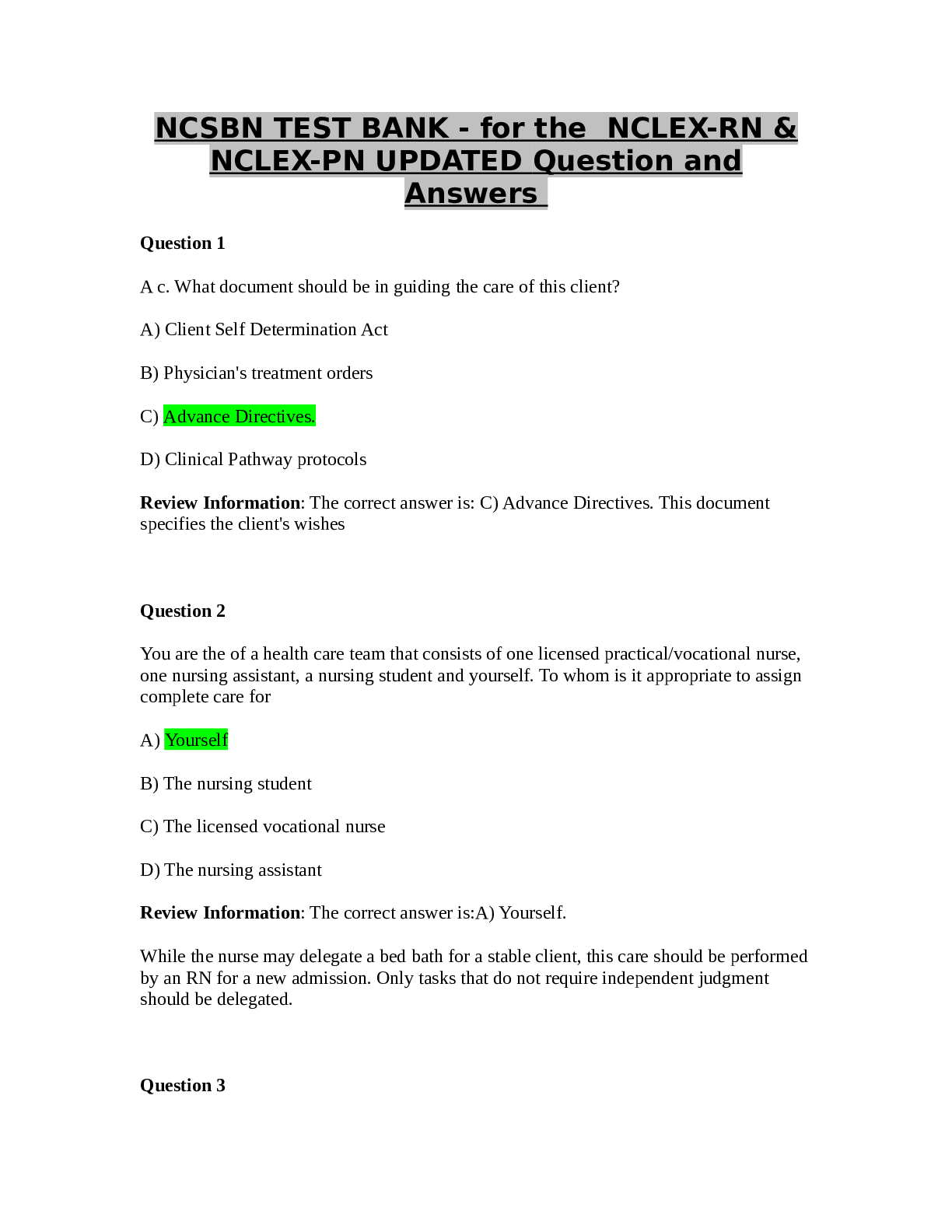
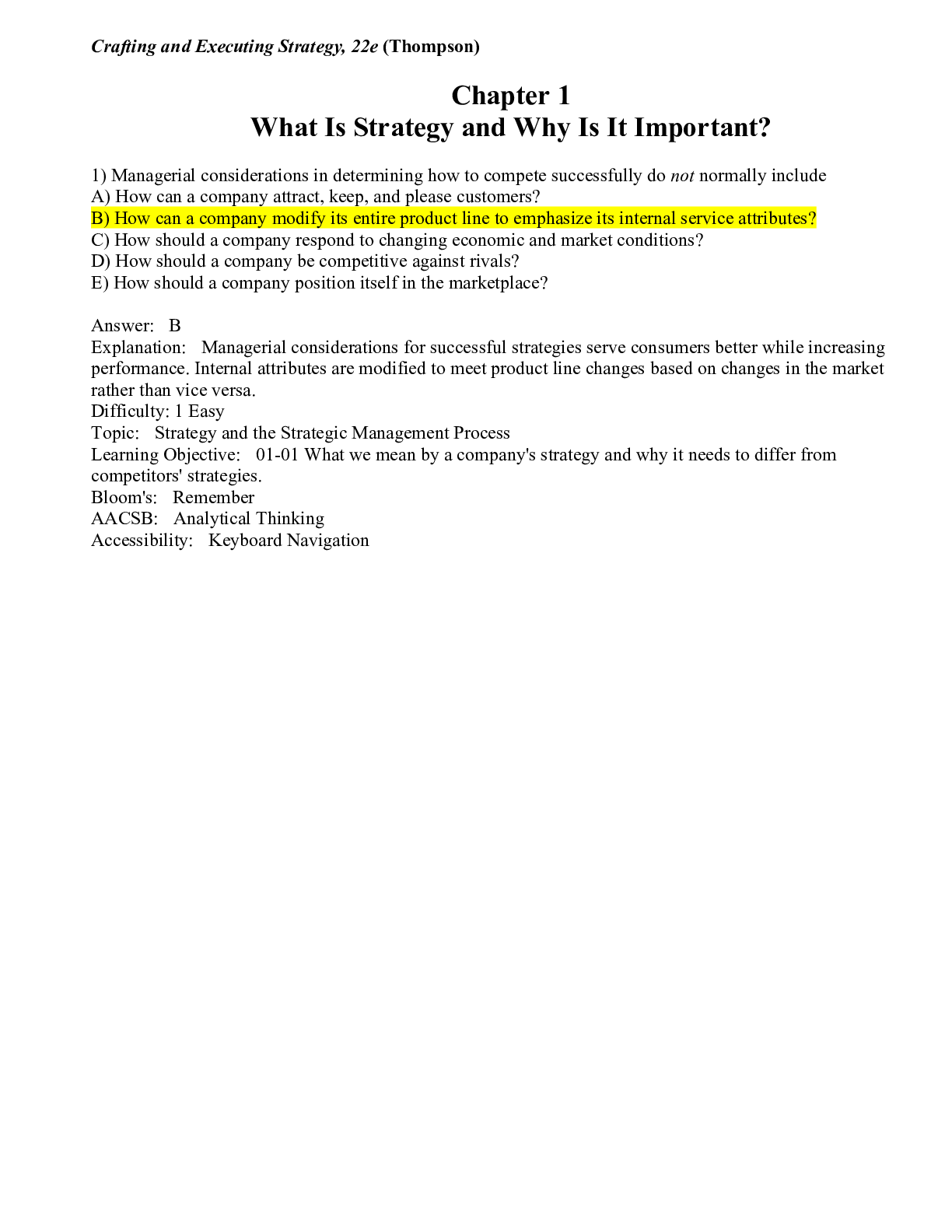


.png)
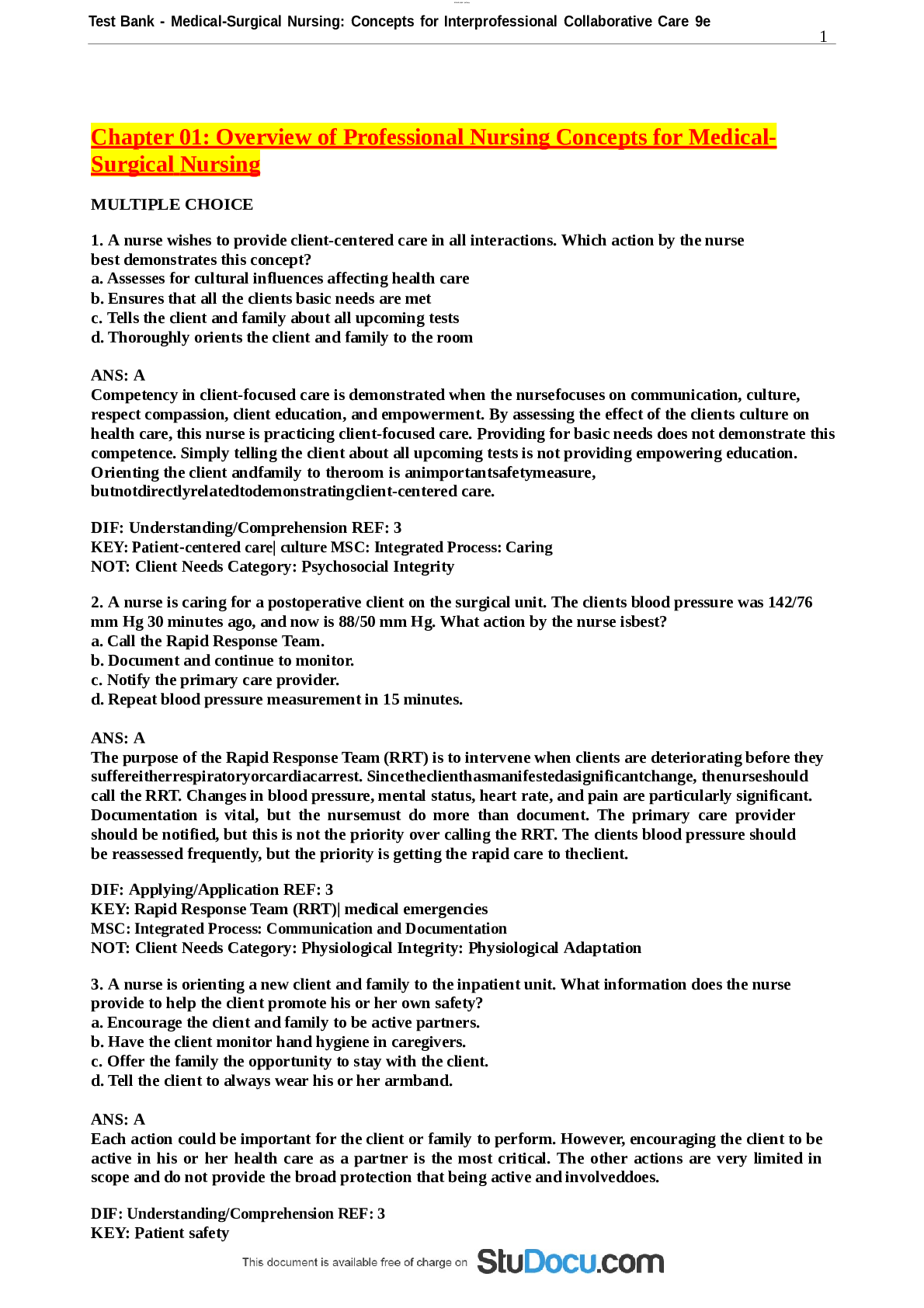


.png)



